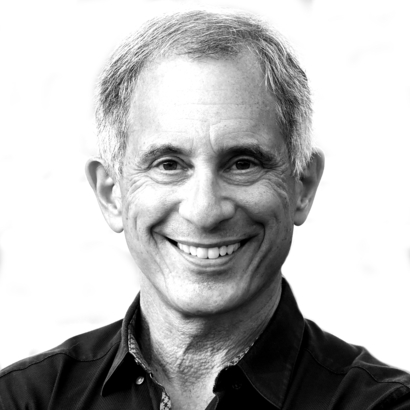Most business books fall into one of two categories. There are the investigative and crusading anti-business screeds about greedy corporations, and then there are the celebratory explications of how those corporations accomplished their amazing feats.
To his credit, the veteran business journalist Rick Wartzman’s new book about Walmart’s labor practices isn’t so easily categorized. In fact, he embraces both paradigms, as revealed in the book’s title: Still Broke: Walmart’s Remarkable Transformation and the Limits of Socially Conscious Capitalism. Through his careful, exhaustive research and engrossing storytelling, Wartzman will surely simultaneously please and annoy the higher-ups in Bentonville, Arkansas.
Yes, he writes, Walmart, the largest company in the U.S. by sales, has earnestly tried to improve the plight of its workers, particularly by repeatedly raising hourly wages under the current C.E.O., Doug McMillon.
Yet two caveats will sting. First, Walmart may have embraced change, but only after stubbornly resisting it. Worse, for all the company’s efforts, employees are barely getting by. “Frontline workers, union leaders, nuns, newspaper reporters, politicians, executives, and board members all pushed, some of them for years,” Wartzman writes, to get Walmart to pay and treat its people better.
“And after all of that … here’s where Walmart landed: as of summer, 2022 at least half of its US hourly workers still made less than $29,000 a year, many of them a fair bit less.” He calculates that in 2020 more than 10,000 Walmart employees in six states where data is available were on Medicaid; more than 14,000 in nine states received food stamps.
“Frontline workers, union leaders, nuns, newspaper reporters, politicians, executives, and board members all pushed” to get Walmart to pay and treat its people better.
Wartzman has solid credentials for telling both sides of this story. He edited an investigative series on Walmart’s labor practices at the Los Angeles Times that won a Pulitzer Prize in 2004. He also runs a business-focused nonprofit that has received funding from Walmart, which he duly discloses, inviting the reader to decide if he pulls any punches. (I believe he does not, which is a good opportunity to disclose that I am a recent professional friend and longtime admirer of Wartzman’s, particularly for The King of California, the masterful 2003 biography he co-wrote about J. G. Boswell, the cotton magnate.)
In trying to explain how a company that makes more than $13 billion in profits employs so many impoverished people, Wartzman retells the company’s origin story. Though Sam Walton, who founded Walmart in 1962, was miserly with wages and a union buster from the get-go, he also instituted a profit-sharing plan that enriched many hourly workers, beginning in 1971. For years Walmart’s “associates” were a genuinely happy bunch.

Things deteriorated as Walmart became a global goliath, long after “Mr. Sam” passed from the scene, in 1992. Walmart only slowly caught on that its reputation was hurting its business, and it took even longer for the realization to take hold that its unkempt store conditions were at least partly attributable to its overworked employees. (Management killed the hourly-worker profit-sharing plan in 2010.) Wartzman describes the superficial and substantive actions Walmart took to correct its course, including its sincere (if avowedly self-serving) interest in the environment, the hiring of high-priced spin doctors to improve its image, and, only in the last decade or so, dramatically increasing wages.
Walmart took to the environmental cause with gusto, initially by reducing the packaging it used and by requiring its many suppliers to follow suit. That such moves trimmed expenses doesn’t diminish the impact of Walmart’s efforts. “Walmart has come to be widely regarded as a corporate environmental leader—imperfect, yes, but a company that has taken the issues seriously and is making real progress in the right direction,” Wartzman writes.
Its public-relations battles were more of a mixed bag. In the mid-2000s Walmart came under attack by the United Food and Commercial Workers International Union and the Service Employees International Union (S.E.I.U.), which were more successful in publicly embarrassing the giant retailer than they were in unionizing its workforce.
Walmart used its environmental credentials as well as an eventual collaboration with the S.E.I.U. on issues that included health care to chip away at its lousy image. Walmart, Wartzman writes, was one of the few large U.S. companies to support the employer mandate in Barack Obama’s signature health-care legislation, the Affordable Care Act. The National Retail Federation was “flabbergasted” by Walmart’s apostasy.
But it was only by diligently listening to its own employees—less through massive “pulse” surveys of questionable value than creative techniques that included sending an executive under cover to walk proverbially in the workers’ shoes—that Walmart eventually realized it needed to bump up pay. A constructive relationship with organized labor just might have alerted Walmart brass to its store-quality and workforce woes sooner, but that never was and still isn’t on the table. The company that Mr. Sam founded supports saving the earth and worker re-training, and Wartzman surprisingly senses a progressive spirit among many of its newer executives. But Walmart remains adamantly anti–organized labor.
Indeed, if I have any quibble, it’s that Wartzman doesn’t get McMillon, who granted him extensive interviews, on the record explaining this stance. McMillon comes off as well meaning and genuinely perplexed as to why the employees at his dominant company are “still broke.” That he and the others looking after the anti-union Sam Walton’s retailer do so much to frustrate their workers’ right to organize may well provide an answer.

Adam Lashinsky is the former executive editor of Fortune magazine and author of Inside Apple: How America’s Most Admired—and Secretive—Company Really Works. Currently a freelance journalist, he is writing a biography of the late columnist and presidential speechwriter William Safire


